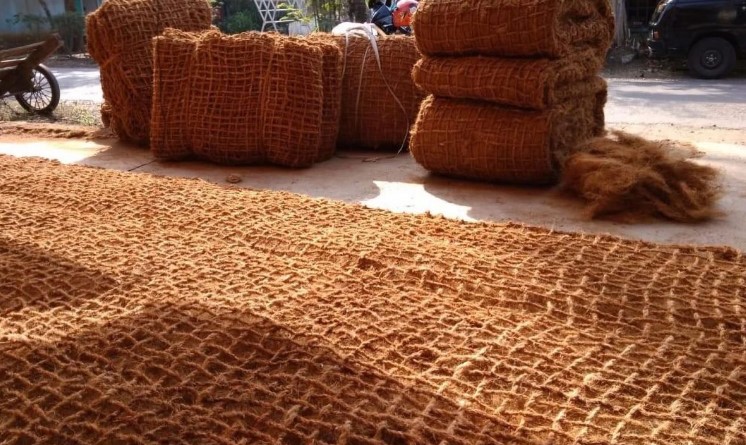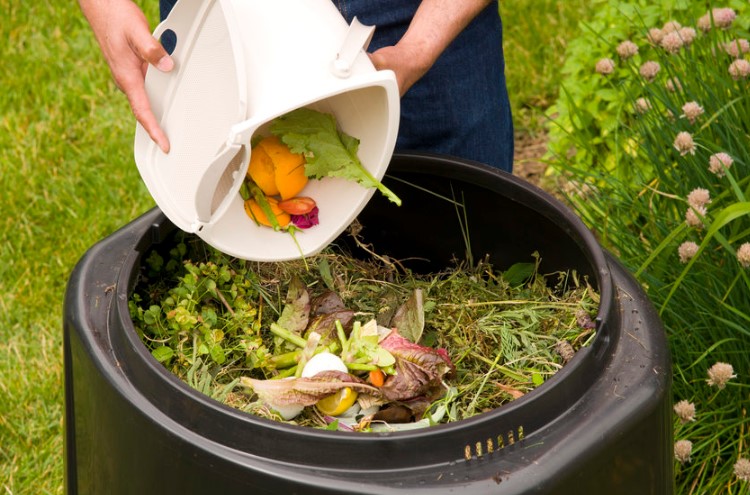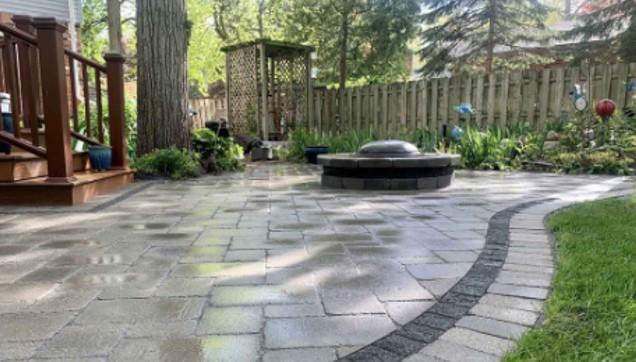The Versatility and Benefits of Cocomesh

What is Cocomesh?
Cocomesh, also known as coir net or coconut fiber mesh, is a biodegradable netting made from the husk of coconuts. It is widely recognized for its environmental benefits and versatility, making it an ideal solution for erosion control, landscaping, and various agricultural applications.
The Origins and Composition of Cocomesh
Cocomesh is derived from coir, the fibrous material found between the hard, internal shell and the outer coat of a coconut. This coir is processed into yarn, which is then woven into a mesh. The resulting product is durable, biodegradable, and eco-friendly, making it a sustainable alternative to synthetic materials.
Applications of Cocomesh
Cocomesh is a versatile material with a wide range of applications in environmental conservation, agriculture, landscaping, and sustainable construction. Here are some of the key uses:
1. Erosion Control
Cocomesh is highly effective in preventing soil erosion. Its fibrous structure traps soil particles and stabilizes the ground, making it particularly useful on slopes, embankments, and areas prone to heavy rainfall and water runoff. By holding the soil in place, cocomesh allows vegetation to establish roots and grow, further enhancing soil stability.
2. Landscaping
In landscaping projects, cocomesh provides a natural solution for soil stabilization and plant support. It is commonly used in garden beds, pathways, and slopes to prevent soil erosion and maintain the integrity of landscaped areas. Cocomesh blends seamlessly with the natural environment, offering both functional and aesthetic benefits.
3. Agriculture
Cocomesh plays a significant role in agriculture by improving soil quality and retaining moisture. It helps protect crops from erosion and provides a stable environment for plant growth. Farmers use cocomesh in various applications, such as vineyard management, tree plantation, and vegetable farming, to enhance productivity and soil health.
4. Green Building
Cocomesh is increasingly utilized in green building projects due to its biodegradable nature and ability to support plant growth. It is used in green roofs, living walls, and other eco-friendly construction practices to enhance insulation, reduce stormwater runoff, and improve air quality. Cocomesh contributes to sustainable building designs that promote environmental health.
5. Coastal and Wetland Protection
Cocomesh is effective in stabilizing soil and preventing erosion in coastal and wetland areas. It supports the growth of vegetation, which helps protect shorelines and wetlands from degradation. Cocomesh is used in various projects aimed at restoring and preserving these sensitive environments, promoting biodiversity and natural habitat recovery.
6. Bioengineering
In bioengineering projects, cocomesh serves as a natural solution for soil stabilization and erosion control. It is used in the construction of retaining walls, embankments, and other structures that require long-term stability and environmental compatibility. Cocomesh enhances the durability and sustainability of bioengineering projects.
7. Habitat Restoration
Cocomesh aids in habitat restoration by providing a stable foundation for the growth of native plants. It is used in reforestation and revegetation projects to restore natural habitats and support wildlife. The biodegradable nature of cocomesh ensures that it integrates seamlessly into the ecosystem, promoting long-term ecological health.
Overall, cocomesh’s versatility and environmental benefits make it a valuable tool in various applications aimed at promoting sustainability and environmental conservation.
Benefits of Cocomesh
Cocomesh offers numerous benefits that make it a preferred choice for various environmental and sustainable practices. Here are some of the key advantages:
1. Eco-friendly and Biodegradable
Cocomesh is made from natural coconut fibers, making it an environmentally friendly alternative to synthetic materials. Its biodegradability ensures that it breaks down naturally over time, leaving no harmful residues in the environment. This helps reduce pollution and supports sustainable practices.
2. Cost-effective
Compared to other erosion control and soil stabilization methods, coconet is cost-effective. Its durability and effectiveness in preventing erosion reduce the need for frequent replacements and maintenance, leading to long-term cost savings. This makes it a practical solution for both small and large-scale projects.
3. Enhances Soil Health
Cocomesh improves soil health by retaining moisture and preventing erosion. It provides a stable environment for vegetation to establish and grow, which enhances soil structure and fertility. This leads to healthier plants and more productive agricultural and landscaping projects.
4. Versatile and Easy to Use
Cocomesh is versatile and can be used in a wide range of applications, from erosion control and landscaping to agriculture and green building. It is easy to install and can be cut to fit different project requirements. This flexibility makes it a practical choice for various environmental challenges.
5. Supports Vegetation Growth
By stabilizing the soil and retaining moisture, cocomesh creates favorable conditions for vegetation growth. It supports the establishment of plants and grasses, which further enhance soil stability and prevent erosion. This makes cocomesh an ideal solution for reforestation, revegetation, and habitat restoration projects.
6. Reduces Erosion and Runoff
Cocomesh effectively reduces soil erosion and water runoff, which are common problems in areas with heavy rainfall and water flow. By trapping soil particles and stabilizing the ground, cocomesh minimizes the impact of erosion and runoff, protecting the landscape and preserving soil quality.
7. Enhances Aesthetic Appeal
In landscaping and green building projects, cocomesh enhances the aesthetic appeal of the area. Its natural appearance blends seamlessly with the environment, providing an attractive and eco-friendly solution for soil stabilization and plant support. This makes cocomesh a popular choice for parks, gardens, and other landscaped areas.
Overall, the benefits of cocomesh make it an excellent choice for various applications aimed at promoting environmental sustainability, enhancing soil health, and supporting vegetation growth. Its eco-friendly nature, cost-effectiveness, and versatility make it a valuable tool in addressing environmental challenges and promoting sustainable practices.
How to Install Cocomesh
Installing cocomesh is a straightforward process that requires minimal tools and preparation. Follow these steps to effectively install cocomesh for erosion control, landscaping, or other applications:
- Prepare the Site
- Clear the area of debris, rocks, and any obstacles that could interfere with installation.
- Ensure the soil is properly graded and compacted to provide a stable base for the cocomesh.
- Unroll the Cocomesh
- Start at one end of the area where cocomesh is to be installed.
- Unroll the cocomesh slowly and evenly across the ground, ensuring it covers the entire surface to be stabilized.
- Secure the Cocomesh
- Use stakes, pegs, or pins to secure the edges and corners of the cocomesh to the ground.
- Place stakes approximately every few feet along the edges and wherever necessary to prevent movement and ensure stability.
- Overlap the Edges
- If using multiple rolls of cocomesh, overlap the edges by at least 6 inches to ensure continuous coverage.
- Securely fasten overlapping sections together using biodegradable ties or clips to maintain integrity.
- Cover with Soil (Optional)
- For additional stability and to enhance aesthetics, cover the cocomesh lightly with a thin layer of soil or mulch.
- This helps anchor the cocomesh and encourages vegetation growth while providing a natural appearance.
- Water the Area
- After installation, water the area thoroughly to help settle the soil and activate the natural bonding process of the cocomesh.
- Adequate watering promotes root establishment and ensures the cocomesh integrates seamlessly into the environment.
- Monitor and Maintain
- Regularly inspect the installed cocomesh to ensure it remains securely anchored and effective in its intended application.
- Maintain proper vegetation cover and manage water flow to optimize the long-term effectiveness of cocomesh in erosion control and soil stabilization.
By following these steps, you can install cocomesh effectively to mitigate soil erosion, enhance landscaping projects, support vegetation growth, and promote sustainable environmental practices.
Case Studies
Coastal Erosion Control in the Philippines
In coastal regions of the Philippines, cocomesh has been implemented to combat severe erosion along shorelines. By stabilizing the soil and promoting the growth of coastal vegetation like mangroves, cocomesh has effectively reduced erosion rates. This approach not only protects the coastline from further degradation but also enhances biodiversity and supports local fishing communities reliant on healthy marine ecosystems.
Vineyard Management in California
Vineyards in California have adopted cocomesh to improve soil health and prevent erosion in their vineyard rows. The use of cocomesh has minimized soil runoff during heavy rains, preserving valuable topsoil and nutrients crucial for grapevine growth. As a result, vineyard managers have observed enhanced grape yields and more sustainable farming practices, reducing environmental impact while maintaining high-quality wine production.
Habitat Restoration in Wetlands
In wetland restoration projects globally, cocomesh has played a pivotal role in stabilizing soil and creating favorable conditions for native plant species to thrive. By preventing erosion and supporting vegetation growth, cocomesh aids in restoring natural habitats crucial for wildlife conservation. This approach fosters ecosystem resilience and enhances the ecological integrity of wetland areas, contributing to broader conservation efforts.
Green Building Projects
Cocomesh is increasingly used in green building initiatives worldwide, particularly in urban areas where sustainable construction practices are prioritized. It is utilized in green roofs and living walls to enhance stormwater management, improve air quality, and reduce urban heat island effects. Cocomesh’s biodegradable properties align with green building standards, promoting environmentally responsible development while creating aesthetically pleasing and functional green spaces.
Agricultural Applications in Southeast Asia
Across Southeast Asia, farmers have integrated cocomesh into agricultural practices to protect crops and improve soil fertility. By using cocomesh for erosion control and moisture retention, farmers mitigate soil erosion on slopes and enhance water efficiency in rice paddies and vegetable farms. This sustainable approach not only boosts crop yields but also reduces environmental impact, contributing to food security and agricultural sustainability in the region.
Urban Parks and Landscaping Projects
In urban parks and landscaping projects, cocomesh serves as a sustainable solution for soil stabilization and erosion prevention. Its natural appearance blends seamlessly with park environments, providing durable support for walkways, garden beds, and green spaces. Cocomesh’s versatility and environmental benefits make it a preferred choice for enhancing urban aesthetics while promoting sustainable land management practices.
These case studies illustrate the diverse applications and benefits of cocomesh in environmental conservation, agriculture, urban development, and habitat restoration. By leveraging cocomesh’s biodegradable nature and effective soil stabilization properties, communities worldwide can achieve sustainable solutions to environmental challenges while fostering ecological resilience and preserving natural resources.
Conclusion
Cocomesh stands as a testament to innovation in sustainable practices, offering a natural and effective solution to numerous environmental challenges. From combating soil erosion and enhancing agricultural productivity to supporting habitat restoration and green building initiatives, cocomesh has proven its versatility and eco-friendly credentials. Its biodegradable nature ensures minimal environmental impact, while its ability to stabilize soil and support vegetation growth promotes long-term sustainability.
As we continue to face global environmental concerns, embracing solutions like cocomesh is crucial. By integrating cocomesh into various applications, from coastal protection to urban landscaping, we not only safeguard our natural resources but also contribute to healthier ecosystems and resilient communities. Whether you’re a farmer, urban planner, conservationist, or homeowner, adopting cocomesh represents a commitment to sustainable practices and a greener future.
Join the movement towards sustainable living and environmental stewardship by incorporating cocomesh into your projects and initiatives. Together, we can harness the power of nature to create a more sustainable and harmonious world for generations to come. Embrace cocomesh and pave the way for a greener tomorrow.








